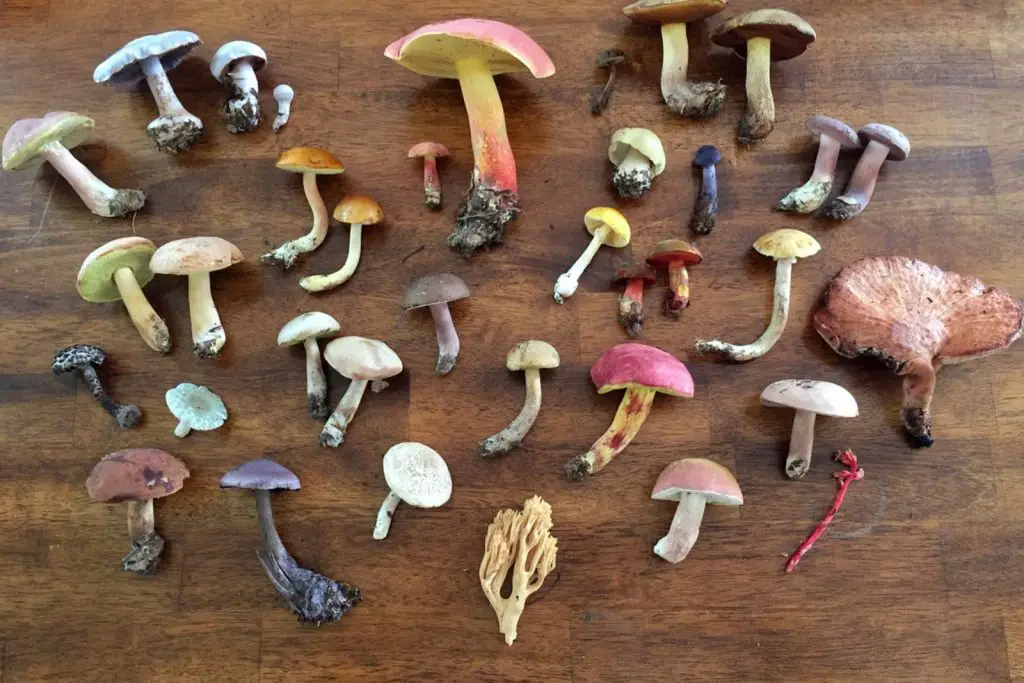
Shelly beans, also known as shell beans or fresh beans, are a delicious and nutritious vegetable that can be enjoyed in a variety of dishes. Freezing shelly beans allows you to preserve their freshness and enjoy them even when they are out of season. By following a few simple steps, you can freeze shelly beans effectively while retaining their desired texture and flavor. This article provides a comprehensive guide on how to freeze shelly beans to ensure their optimal quality for future use.
Here’s a step-by-step guide on freezing shelly beans:
Step 1: Select fresh shelly beans
When selecting shelly beans to freeze, it’s important to choose ones that are fresh and in optimal condition. This ensures that the frozen beans will retain their flavor, texture, and nutritional value. Here’s why each aspect is important:
- Crispness: Fresh shelly beans should have a crisp and firm texture. This indicates that they are still young and tender, making them ideal for freezing. Beans that are soft or limp may have already begun to deteriorate and won’t freeze well.
- Vibrant color: Look for shelly beans with a vibrant and uniform color. This is a sign of freshness and indicates that the beans are at their peak quality. Discolored or dull beans may be older and could have lost some of their flavor and nutrients.
- Firm texture: When you gently squeeze a fresh shelly bean, it should feel firm and snap easily. Avoid beans that are overly soft or mushy, as they may have started to lose their freshness and taste.
- Absence of spoilage signs: Check for any visible signs of spoilage, such as mold, dark spots, or wrinkles. These are indications that the beans have begun to deteriorate and should not be used for freezing.
Step 2: Wash and trim the beans
Properly washing and trimming shelly beans before freezing is an important step to remove any dirt, debris, or unwanted parts. Here’s why it’s essential and how to do it:
- Removing dirt and debris: Shelly beans, like any other fresh produce, can accumulate dirt, dust, or other impurities during harvesting, transportation, or storage. Washing them under cold running water helps remove these contaminants, ensuring that you freeze clean and hygienic beans.
- Promoting food safety: Washing the beans helps minimize the risk of bacterial contamination. While freezing can slow down bacterial growth, it doesn’t eliminate it entirely. Washing reduces the presence of bacteria that might be present on the surface of the beans.
- Enhancing flavor: Cleaning the beans can also improve their flavor. Removing dirt and debris ensures that you’re not freezing any unwanted particles along with the beans, which could potentially affect their taste.
- Trimming the ends: Trimming the ends of the shelly beans is necessary to remove any tough or woody parts. The ends of the beans are often where they were attached to the plant, and these parts can be fibrous and less enjoyable to eat. Trimming them off improves the overall texture and tenderness of the beans.
To wash and trim shelly beans:
- Place the shelly beans in a colander or strainer.
- Rinse them thoroughly under cold running water. Use your hands to gently rub the beans to remove any dirt or debris.
- Examine each bean and trim off the ends using a sharp knife or kitchen shears. Cut off a small portion from both ends, ensuring you remove any tough or stringy parts.
- If desired, you can also remove any blemishes or imperfections by trimming them away.
- After washing and trimming, give the beans a final rinse under running water to remove any residual dirt.
Step 3: Blanch the shelly beans
Blanching shelly beans is a crucial step in the freezing process as it helps preserve their quality by deactivating enzymes that can cause deterioration. Here’s why blanching is important and how to properly blanch shelly beans:
- Enzyme deactivation: Shelly beans contain natural enzymes that, if left active, can lead to the loss of flavor, texture, and color over time, even when frozen. Blanching involves briefly exposing the beans to boiling water, which deactivates these enzymes and helps maintain their freshness during storage.
- Retaining color and flavor: Blanching helps preserve the vibrant color and fresh flavor of shelly beans. By quickly blanching them, you can lock in their natural pigments and flavors, ensuring they remain visually appealing and tasty even after freezing and thawing.
- Texture maintenance: Blanching also helps to preserve the texture of shelly beans. By subjecting them to high heat for a short period, the beans are partially cooked, making them tender-crisp. This ensures that they retain a desirable texture when cooked after thawing.
To blanch shelly beans:
- Fill a large pot with water and bring it to a rolling boil. You’ll need enough water to fully submerge the beans.
- While the water is heating, prepare a bowl filled with ice water. This will be used to cool the beans after blanching.
- Add the shelly beans to the boiling water and let them cook for 2 to 3 minutes. The exact time may vary depending on the size and thickness of the beans. It’s recommended to test a bean for doneness by biting into it or cutting it with a knife. The beans should be tender-crisp, meaning they are cooked but still have a slight crunch.
- Once the beans are blanched, immediately transfer them to the prepared bowl of ice water. This rapid cooling process, known as “shocking,” halts the cooking and helps maintain their vibrant color and texture.
- Allow the beans to cool in the ice water for the same amount of time they were blanched. This ensures they are fully cooled and stops any residual cooking.
- Once cooled, drain the beans thoroughly to remove excess water. Pat them dry gently using a clean kitchen towel or paper towels.
Can I freeze shelly beans without blanching them first?
While blanching is recommended to preserve the quality of shelly beans, you can freeze them without blanching. However, blanching helps maintain their texture, color, and nutritional value for a longer duration in the freezer.
Step 4: Cool the beans
After blanching shelly beans, it is crucial to cool them rapidly to halt the cooking process. Cooling the beans in ice water serves several important purposes. Here’s why cooling is necessary and how to properly cool blanched shelly beans:
- Halting the cooking process: By transferring the blanched beans into ice water, you rapidly lower their temperature. This helps to halt the cooking process immediately, preventing them from becoming overcooked and losing their desirable texture.
- Retaining vibrant color: Cooling blanched shelly beans in ice water helps preserve their vibrant color. The rapid cooling helps to set the green pigments in the beans, maintaining their appealing visual appearance even after freezing and thawing.
- Maintaining texture and crispness: Cooling the beans quickly helps them retain their tender-crisp texture. It prevents them from becoming mushy or overly soft during the cooling phase, ensuring they maintain their desired firmness after freezing.
To cool blanched shelly beans:
- Prepare a large bowl or basin filled with ice water while the beans are still blanching.
- Once the beans are blanched for the recommended time, immediately drain them from the boiling water.
- Transfer the blanched beans into the bowl of ice water. Make sure the beans are fully submerged in the ice water.
- Allow the beans to cool in the ice water for the same amount of time they were blanched. This ensures that the beans are cooled all the way through and that any residual heat is eliminated.
- Stir the beans gently in the ice water to ensure even cooling and to speed up the process.
- After the cooling period, remove the beans from the ice water and drain them thoroughly. You can use a colander or strainer to remove excess water.
- Pat the beans dry gently using a clean kitchen towel or paper towels. It’s important to remove as much moisture as possible before freezing to prevent ice crystals from forming.
Step 5: Drain and dry the beans
Draining and drying the cooled shelly beans before freezing is an important step to remove any excess moisture from the surface. This helps to prevent the formation of ice crystals during the freezing process. Here’s why draining and drying are necessary and how to properly do it:
- Preventing ice crystal formation: Excess moisture on the surface of the beans can lead to the formation of ice crystals when they are frozen. These ice crystals can negatively impact the texture and quality of the beans, causing them to become mushy or develop a freezer-burned taste. Removing the moisture helps minimize the formation of ice crystals and maintains the beans’ integrity during freezing.
- Preserving flavor and texture: By draining and drying the beans, you ensure that they freeze individually and don’t stick together. This allows for easier portioning and prevents clumping. It also helps to maintain the beans’ original texture and flavor, so they retain their quality when you use them in recipes after thawing.
To drain and dry shelly beans:
- Place the cooled shelly beans in a colander or strainer to allow any remaining water to drain off.
- Gently shake the colander or lightly toss the beans to remove excess water. Avoid pressing or squeezing the beans as it may cause them to become misshapen or damaged.
- Once the majority of the water has drained off, transfer the beans to a clean kitchen towel or a layer of paper towels.
- Pat the beans dry gently using the towel or paper towels. Lightly press them to absorb any remaining moisture.
- Make sure to dry all sides of the beans thoroughly to remove any moisture that could lead to ice crystal formation during freezing.
It’s important to handle the shelly beans delicately during the draining and drying process to prevent any damage or bruising. Properly draining and drying the beans ensures that they freeze without excess moisture, helping to maintain their quality and preventing undesirable texture changes during storage.
Step 6: Arrange the beans for flash-freezing
Arranging the blanched and dried shelly beans in a single layer on a baking sheet or tray before freezing is a crucial step to ensure that the beans freeze individually. Here’s why arranging them in a single layer is important and how it benefits the freezing process:
- Individual freezing: When shelly beans freeze individually, it allows for easier portioning and retrieval when you need to use them later. Freezing in a single layer prevents the beans from clumping together, making it simple to measure out the desired amount without having to thaw a large frozen block of beans.
- Preventing sticking: By ensuring that the beans are not touching each other during freezing, you minimize the risk of them sticking together. If the beans freeze in contact with one another, they can become difficult to separate, leading to an uneven thawing process and potential damage to the beans’ texture.
- Efficient freezing: Spreading the beans in a single layer on a baking sheet or tray promotes faster and more efficient freezing. The beans are exposed to the cold air in the freezer, allowing them to freeze more quickly and evenly. This helps to preserve the beans’ freshness and quality during the freezing process.
To arrange shelly beans for freezing:
- Prepare a clean baking sheet or tray that fits in your freezer. Line it with parchment paper or a silicone mat to prevent the beans from sticking to the surface.
- Take the blanched and dried shelly beans and spread them out in a single layer on the prepared baking sheet or tray. Make sure the beans are evenly spaced and not touching each other.
- If you have a large quantity of beans, you may need to use multiple baking sheets or trays to ensure they all freeze in a single layer.
To flash-freeze shelly beans:
- Place the baking sheet or tray with the arranged shelly beans in the freezer. Ensure it is on a flat surface and can be left undisturbed during freezing.
- Allow the beans to freeze for about 1 to 2 hours, or until they are completely frozen. The exact freezing time may vary depending on the size and thickness of the beans.
- Check the beans periodically during the freezing process. They should be firm and solid to the touch when fully frozen.
- Once the beans are completely frozen, remove the baking sheet or tray from the freezer.
- If you need to freeze additional batches of shelly beans, repeat the process with new baking sheets or trays, ensuring they are arranged in a single layer.
Step 7: Package and seal the beans
Packaging and sealing the frozen shelly beans in airtight containers or freezer bags is a crucial step to protect them from freezer burn and maintain their quality during storage. Here’s why packaging and sealing are important and how they benefit the beans:
- Preventing freezer burn: Freezer burn occurs when the frozen food is exposed to air, causing dehydration and oxidation. This can lead to a loss of flavor, texture, and overall quality of the beans. Packaging the beans in airtight containers or freezer bags helps create a barrier against air, reducing the risk of freezer burn and ensuring the beans stay fresh.
- Maintaining texture and flavor: Proper packaging and sealing help maintain the desired texture and flavor of the shelly beans. By removing as much air as possible from the packaging, you minimize the potential for moisture loss and the formation of ice crystals. This helps preserve the beans’ natural texture and flavor, ensuring they remain enjoyable to eat after thawing.
- Efficient use of freezer space: Airtight packaging allows you to stack and organize the frozen beans more efficiently in the freezer. By using freezer bags or containers, you can maximize the use of space and easily access the desired quantity of beans when needed, without having to thaw the entire batch.
To package and seal the frozen shelly beans:
- Take the flash-frozen shelly beans from the baking sheet or tray.
- If using freezer bags, choose high-quality bags specifically designed for freezer use. If using containers, select airtight, freezer-safe containers.
- Transfer the frozen shelly beans into the freezer bags or containers. Fill them to the desired amount, leaving some space for expansion during freezing.
- Press out as much air as possible from the bags before sealing them tightly. If using containers, ensure the lids are securely fastened.
- For freezer bags, you can use a straw to suck out excess air from the bag before sealing it. This can help create a more airtight seal.
Is it possible to freeze shelly beans without using freezer bags or containers?
While freezer bags or containers are the most common methods for freezing shelly beans, you can also use airtight, freezer-safe jars or vacuum-sealed bags for storage.
Step 8: Label and date the packages
Labeling and dating the freezer bags or containers that store the frozen shelly beans is a crucial step for proper organization and ensuring that the beans are used in a timely manner. Here’s why labeling and dating are important and how they benefit the storage of the beans:
- Tracking storage time: Labeling the packages with the date of freezing allows you to keep track of how long the shelly beans have been in the freezer. This is important because frozen foods can gradually lose quality over time. By knowing the storage time, you can prioritize using the oldest beans first to ensure they are consumed at their best quality.
- Avoiding food waste: Properly labeling and dating the packages helps prevent food waste. If you know the date of freezing, you can easily identify the beans that have been in the freezer for an extended period and should be used soon. This way, you can plan your meals and use the frozen beans before their quality deteriorates significantly.
- Organizational purposes: Labeling the packages with the contents provides clear identification of what is inside each bag or container. This is especially helpful if you have multiple types of frozen beans or other ingredients stored in the freezer. Proper labeling helps you locate the shelly beans quickly and efficiently when you need them.
To label and date the packages:
- Use a waterproof marker or labels specifically designed for freezer use.
- Write the contents of the package, such as “Shelly Beans,” on the label or bag.
- Include the date of freezing. Write the month, day, and year to provide a clear reference of when the beans were frozen.
- Attach the label to the bag or container, ensuring it is secure and visible.
- If using reusable containers, you can also write directly on the container with the marker.
Step 9: Store in the freezer
Storing the labeled packages of shelly beans in the freezer is the final step in the process of freezing them. Proper storage conditions are essential to maintain the quality and longevity of the frozen beans. Here’s why proper freezer storage is important and how it benefits the shelly beans:
- Temperature control: Freezers should be set to a temperature of 0°F (-18°C) or below. Maintaining a consistently low temperature is crucial for preserving the quality and safety of frozen foods, including shelly beans. At this temperature, the growth of bacteria and other microorganisms is significantly inhibited, preventing spoilage and foodborne illnesses.
- Quality retention: By storing the shelly beans in the freezer at the appropriate temperature, you can ensure that they maintain their quality for an extended period. Freezing slows down the natural deterioration processes in foods, including enzymatic activity and microbial growth.
- Long-term convenience: Freezing shelly beans allows you to enjoy them even when they are out of season. By properly storing them in the freezer, you have a readily available supply of shelly beans that can be used in a variety of dishes throughout the year. This offers convenience and flexibility in meal planning.
To store the frozen shelly beans in the freezer:
- Place the labeled packages of shelly beans in the freezer, ensuring they are stored in a stable position. Avoid stacking them too high to prevent crushing or damage.
- If using freezer bags, you can consider organizing them in a flat stack to optimize space utilization. If using containers, make sure they are securely closed.
- Ensure that the freezer door or lid is tightly sealed to maintain a consistent temperature inside the freezer.
- Avoid frequent opening and closing of the freezer door, as it can cause temperature fluctuations.
- It is recommended to keep a freezer inventory or list of the frozen shelly beans to easily track what is stored and their respective dates.
How long can shelly beans last in the freezer?
The recommended time frame for using frozen shelly beans at their best quality is within the first 12 months of freezing. While they can be stored for longer periods, their flavor and texture may gradually decline over time. It’s advisable to consume them within the first year to enjoy the optimal flavor and texture.
Other related questions
How do I defrost shelly beans?
Defrosting shelly beans is a simple process that can be done using one of the following methods:
Refrigerator Method:
- Transfer the frozen shelly beans from the freezer to a plate or container.
- Place the beans in the refrigerator and allow them to thaw slowly overnight or for about 8-12 hours.
- Once thawed, the shelly beans are ready to be used in your desired recipe.
Cold Water Method:
- Take the frozen shelly beans and place them in a sealed plastic bag.
- Fill a large bowl or basin with cold water.
- Submerge the bag of shelly beans in the cold water, ensuring that it is fully sealed and no water enters the bag.
- Let the beans sit in the water, periodically changing the water every 30 minutes to maintain a cold temperature.
- The shelly beans will thaw within 1-2 hours, depending on their size and thickness.
- Once thawed, remove the beans from the bag and use them as desired.
Can I use frozen shelly beans directly in recipes without thawing?
Yes, you can use frozen shelly beans directly in recipes without thawing. They can be added to soups, stews, stir-fries, or other cooked dishes. Adjust the cooking time slightly to account for the frozen beans.
Can I refreeze shelly beans?
It is generally not recommended to refreeze shelly beans once they have been thawed. The process of thawing and refreezing can affect their texture and quality. It is best to thaw only the amount of shelly beans needed for immediate use to avoid the need for refreezing.
How do I know if the shelly beans have gone bad after being frozen?
To determine if frozen shelly beans have gone bad, examine their appearance, smell, and texture. Look for any signs of discoloration, freezer burn, or ice crystals. If they have a strong off-putting odor or a slimy texture, it is an indication of spoilage. Trust your senses and discard any shelly beans that show these signs, as consuming spoiled food can lead to foodborne illnesses.
Can I freeze cooked shelly beans?
Yes, cooked shelly beans can be frozen. Allow them to cool completely before packaging and freezing. Keep in mind that the texture of cooked beans may change slightly after freezing and thawing.
Can I freeze shelly beans that have been seasoned or flavored?
Yes, you can freeze seasoned or flavored shelly beans. However, note that the flavors may intensify during freezing, so it’s recommended to adjust the seasoning slightly to account for any potential flavor concentration.
Are frozen shelly beans suitable for canning or long-term storage methods other than freezing?
Freezing is the most recommended method for preserving shelly beans. Canning or other long-term storage methods may not yield desirable results for shelly beans due to their texture and potential quality loss. Freezing is the preferred method for optimal results.








